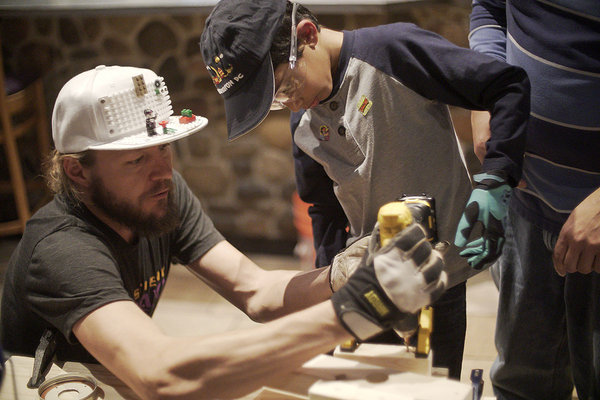This article was written by Amanda Paulson (opens in a new window), a Staff Writer at The Christian Science Monitor (opens in a new window) – we liked it so much, we needed to share it with you! A key part of our current work with Ready To Learn is intended to give parents the tools and agency they need to feel empowered to teach and learn with their kids. Consciously working to foster curiosity is huge!
BOULDER, COLO.—On a recent Saturday, Sage and Aven Davis – aged 8 and 5 – are eagerly experimenting with oil, water, glitter, glow sticks, food coloring, and AlkaSeltzer to make “lava lamps.”
Sage’s is glowing a bright green, while Aven’s has turned to a muddy brown – “like chocolate,” she says happily, shaking the container to make it fizz. Eventually, when the lamps are finished, they move on to a project that allows them to create electrical devices from everyday items like fruit and playdough.
The family is one of dozens that came out to a Boulder, Colo., event sponsored by Science Galaxy, a local organization that encourages kids and their parents to come together around science, curiosity, and critical thinking.
And while Melissa Davis and her husband brought their kids to the Science Galaxy event for some more formal science projects, Ms. Davis says science is a big part of activities at home too.
“My son is really into geodes because of Minecraft, and elements,” she says, referring to a popular video game in which players build with various elements. “He understands smelting. Through video games he was introduced to the terms, and now he has the periodic table of the elements on his wall. We just kind of spur them on according to their own interests.”
That attitude toward science – making it as much a part of integrated family life with young kids as reading to children at bedtime – is getting increased focus from some educators. A new study (opens in a new window) released today examines, both quantitatively and qualitatively, just how families with preschool-age children incorporate science learning into their lives, and what barriers keep them from doing so more.
“Science isn’t present in young children’s classrooms in the same way that literacy is, and parents don’t have the same sort of awareness,” says Shelley Pasnik, one of the authors of the study and vice president of Education Development Center (EDC), which led the study with SRI International, funded by the US Department of Education’s Ready to Learn program. “It’s still acceptable to say I’m not a math person or I’m not a science person.” The question, she says, is “how to define science as a core skill or a core habit that all people need and all people can develop.”
One barrier that emerged in the study was the lack of expertise some parents feel when it comes to science. But Ms. Pasnik – who is also the director of EDC’s Center for Children & Technology – and others are encouraging them to think less about the importance of knowing the answers and more about the habits of mind and curiosity they can encourage.
“It’s not just memorizing facts or knowing what photosynthesis is,” says Pasnik, noting that science with young kids might be as simple as observing a tree outside or playing around with a ramp. “It’s, can you come up with a testable question, and the difference between a guess and a prediction… Young children have the capacity to engage in scientific thinking, and we want to cultivate it for preschoolers and see it grow throughout their lives.”
The push for more support
In the survey, 90 percent of parents reported doing learning activities with their children daily, but less than half the parents surveyed said they do science-related activities daily with their children.
Some parents talked about cooking with their children, observing nature outside, or answering “why” questions as examples of science, but other parents said they were confused by the idea of science, that they didn’t like it, and that their children were too young.
Just over half of the survey respondents said they felt “very confident” in their ability to help their young children learn age-appropriate science skills, compared with about 75 percent who felt that way about reading and math skills – and those numbers dropped for parents with less education.
It’s one reason educators are pushing for more supports and tools to help parents – and especially parents with lower income or education levels – feel confident and engaged in their children’s learning.
Aaron Morris, director of family and community learning for the Public Broadcasting Service (PBS), has been working to develop “two-generational” science workshops for low-income families with just that goal in mind.
In one series, PBS held workshops around the “ScratchJr” programming app they had created along with the Massachusetts Institute of Technology and Tufts University, for both kids and their parents. “We teach them the basics of coding in a light and fun and age-appropriate way,” says Mr. Morris. “We’re looking to inspire and get kids excited about STEM learning, but even more important is our effort to support parents in supporting their kids’ learning.”
Morris says most parents still don’t know how to think through math and science learning, and there isn’t always a clear message from educators, the way there is about, say, reading with children every night.
“When we do coalesce around a message, it will come back to talking with your kids,” says Morris. “It’s about asking questions and helping your kids make observations and engaging in out-loud thinking…. These skills and habits of mind are something three-year-olds are already developing.”
He’s currently developing other two-generational workshops around life science, space, and other PBS Kids apps. Families who have gone to the workshops have reported leaving with new ideas of things to try and home and a renewed interest in engaging in science with their kids. “But anecdotally, the thing we’re seeing that’s the most exciting is joy,” says Morris.
Combine literacy and science
For parents already feeling overwhelmed by the number of different things they’re supposed to be doing with their children – in addition to work and all the necessities of life – it can also be important to underscore that science education doesn’t have to stand on its own, says Susan Friedman, senior director of content for the National Association for the Education of Young Children (NAEYC).
“Literacy and reading and enjoying children’s books can overlap with science exploration,” says Ms. Friedman. “Playing with blocks and developing inclines with a ball – that’s math and science… Something like cooking can be everything together: math, reading the recipe, science in terms of the properties of materials changing. That would make things a little easier for parents.”
NAEYC offers a variety of tools and ideas for parents on its website, emphasizing science as fun, everyday activities that can be as simple as experimenting with water (opens in a new window) at bathtime; tapping into children’s innate sense of wonder using everyday toys (opens in a new window) like tops, eyedroppers, or balls; or using playdough (opens in a new window).
Back at the Science Galaxy event in Boulder, Bracken Christensen’s four-year-old daughter Exie is most excited about the large ball mazes she and a friend are creating out of connecting pipes, constantly changing different elements to see what will happen.
“I’m making a very conscious effort to make her comfortable around this,” says Mr. Christensen, noting that historically, science and engineering have been fields less welcoming to women. He and his wife keep science-focused books around, using Exie’s interests – most recently volcanoes and the solar system – to guide them, and he’s done some early sequential programming games with her.


